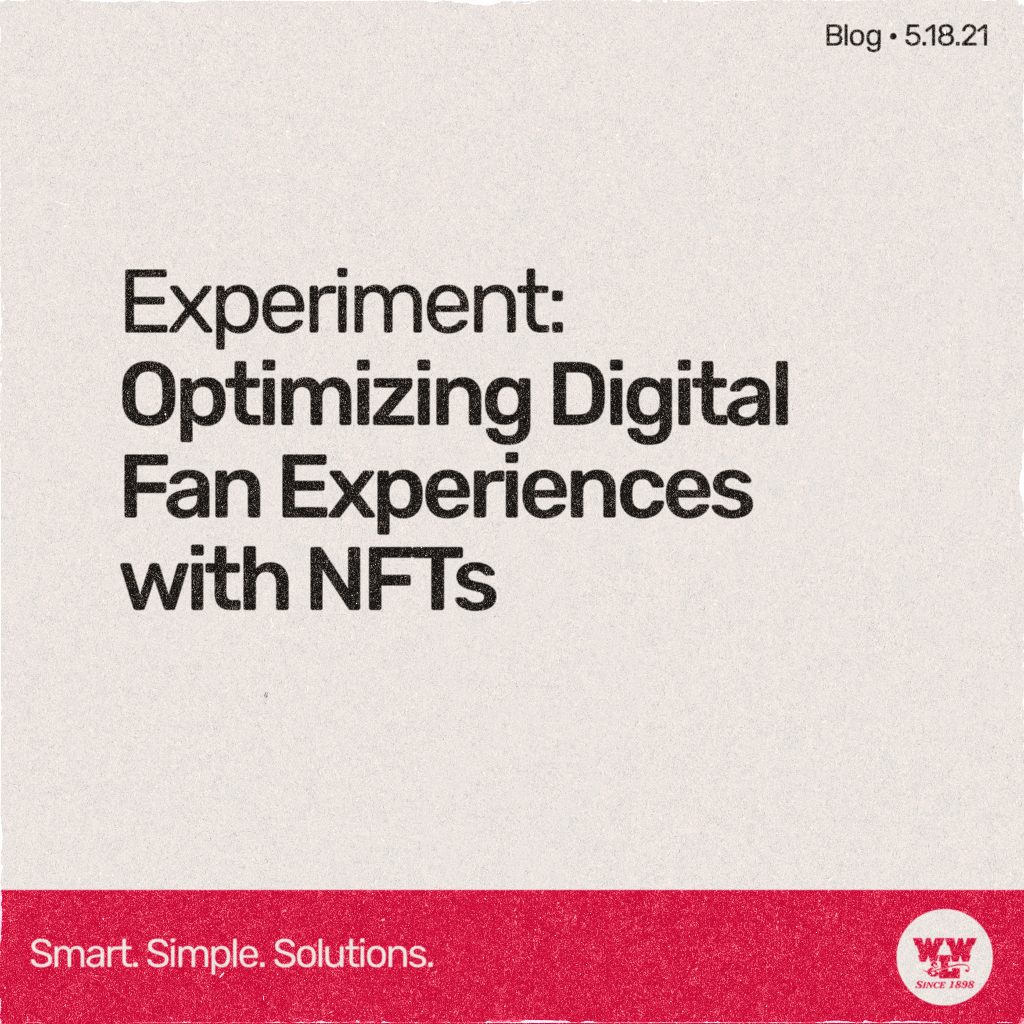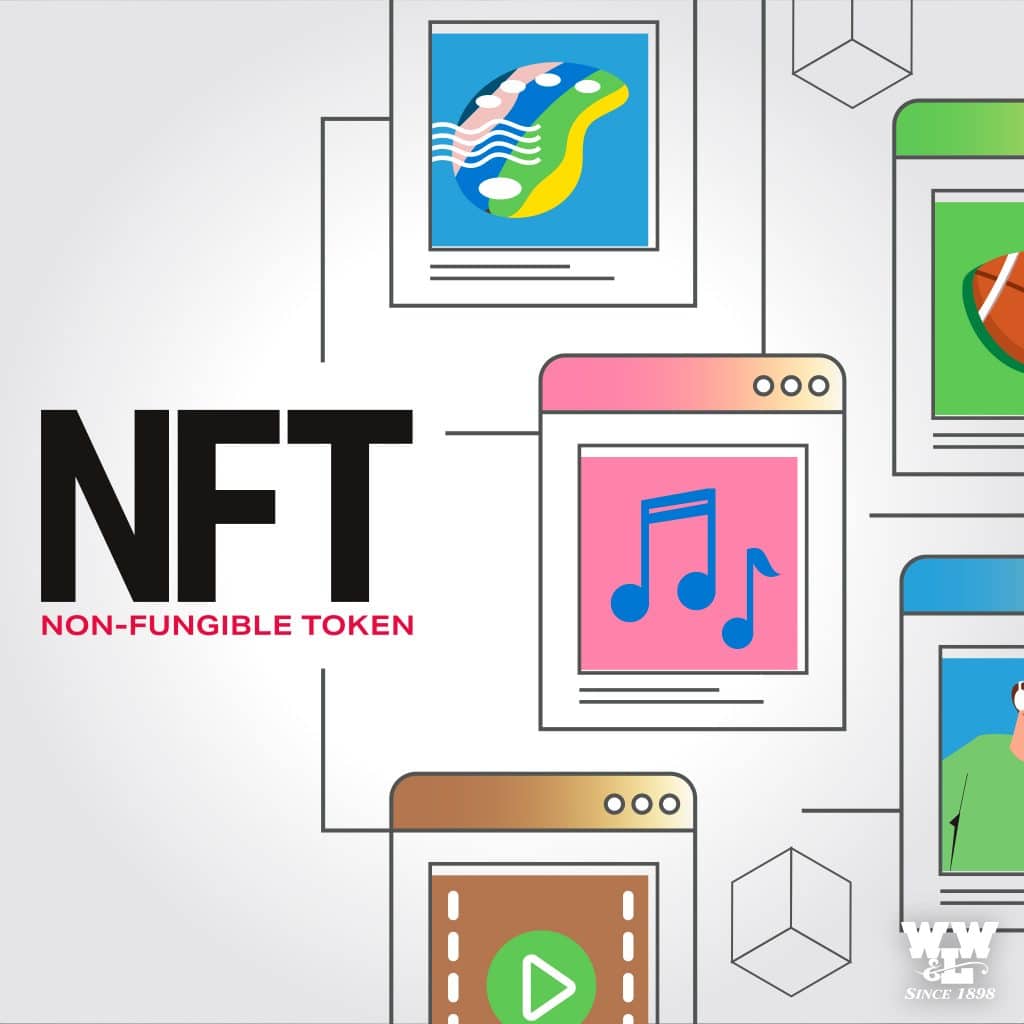Experiment: Optimizing Digital Fan Experiences with NFTs
Non-fungible tokens (NFT) were the exclusive province of crypto-tech enthusiasts until about 5 minutes ago, when the NBA and Bleacher Report demonstrated that NFT’s were a six-figure minimum revenue stream for sports properties and digital fan experiences.
NFTs have the potential to be the next way sport teams and venues extend the fan’s game day experience beyond the final whistle. Giveaways and promotions; the three- (or more) day cycle of pre-game hype, game day excitement, post-game wrap-up; the 24/7/265 “everything is a digitally immersive media-intensive brand experience” approach of the NFL are all ways to take expand on the few hours fans are actually in the stadium. Teams are increasingly focusing their efforts on ways to do more with the fundamental symbol of attendance, the ticket.
NFTs bring all that together, linking the ticket to promotions and shareable (or not-so-shareable) media, all while increasing security and creating an open-ended source of revenue for the team.
Really, the one question that remains is: Are you ready to optimize your digital fan experiences with NFTs?
What are the basics of non-fungible tokens?
NFTs are built on an Ethereum-based blockchain. At the most basic level, think “Bitcoin but for tickets.”
Being on the blockchain gives NFTs a level of ownership integrity that no paper or digital ticket can approach. Like any other blockchain transaction, an NFT contains its complete chain of custody and requires that chain of custody if the owner wishes to sell it.
Within the event ticketing world, this protects both the venue and secondary buyers from the risks of forgery, redundant sales, and scalping. With paper or digital tickets, secondary buyers have no way of knowing if they are receiving the actual ticket, a forgery, or a copy. They could show up at the venue only to find that they bought a fake ticket, or that someone else already entered with that ticket’s barcode or QR code. Blockchain transactions eliminate – not reduce, eliminate – this risk, because the chain of custody is instantly verifiable; and only a product that has an embedded chain of custody – the series of blocks on the chain – can create another block upon transfer.
That digital provenance offers a way for the originator of the product – in our case, the team or venue – to monitor all downstream transactions. Using an NFT as a ticket, the venue can write the code to transfer to them a percentage of all follow-on sales. This gives the venue an incentive to permit the secondary market: if the value of their ticket goes up after initial purchase, they receive a portion of that rise. This also helps them lower the prices on the primary market, as they won’t feel like they must “play defense” against the resellers.
Ticketing is an entry-level use of NFTs
Thinking of NFTs simply as a way of developing a “smart ticket,” though, forecloses too much of their value. Remember, NFTs are “forever” and blockchains are essentially unlimited. Once an NFT is on the market, it can be a source of value for as long as people want to trade for it. That means it shouldn’t functionally expire at the end of the game.
Ted Leonsis, CEO of Monumental Sports & Entertainment – the parent company of the Washington Capitals, Wizards and Mystics – sees NFTs as a way of enabling a ticket to do “something other than let [the purchaser] into the building.”
Leonsis talks about using NFTs to sell a memory. Insert your favorite meme from The Matrix here.
Rather than simply replace paper or mobile tickets with NFTs, Leonsis wants to “take a one-time static paper transaction and turn it into an ongoing, recurring transaction.” Think of it as a digital fan experience. One way to do that is by pairing the ticket with a digital good. Bleacher Report auctioned 40 “Gold Edition” and 600 “Silver Edition” digital basketballs designed by rappers 2 Chainz, Quavo, Lil Baby and Jack Harlow. That brought in over $800,000 in a day, and B/R will continue to generate revenue through a cut of any resales.
B/R’s original plan was to auction off actual, physical basketballs. But after seeing how the NBA’s Top Shot, an NFT-based video highlight marketplace, had already made over $300 million, they decided to swap physical basketballs for the digital ones.
But that doesn’t mean that physical collectibles are on a one-way path to the antiques market. B/R still commissioned the physical basketballs, which will be available to anyone with a “Gold Edition” NFT. They can, therefore, expect a spike in trading activity and the marginal revenue in the days leading up to the basketballs’ delivery date.
Connecting souvenir tickets with non-fungible tokens for a digital fan experience
Souvenir tickets and NFTs create a mini-ecosystem for ticket providers: functional and collectible, digital and physical. Souvenir tickets were already growing in popularity as fans looked for ways to commemorate or simply prove their attendance at an event for which they only had a digital ticket. Particularly as venues push towards a fully paperless fan experience, souvenir tickets linked to an actual ticket – purchased at the point of sale, customized to the fans’ seat – will become a regular souvenir.
By linking the souvenir ticket with the NFT, fans receive both physical and digital evidence of being there.
Going further, the team can then do what Bleacher Report is doing and offer a physical souvenir to those fans who can prove their attendance via the NFT. The fans, then, have the option of selling either the physical good or the NFT – a claim on future promos – to hard-core collectors.
If a particular game plays its way into the history books, NFT-based tickets likely will surge on the secondary market… yes, even after the game is over, people will still be buying and selling the tickets. Hey, no one ever said being a sports fan made sense. The teams can continue to roll out new merchandise linked to a particular game: someone who sold their NFT might miss out on the limited edition hat, while someone who bought the NFT five years after the game can find herself at an exclusive autograph session with the players who were part of that thrilling comeback.
The digital fan experience of NFTs is likely to catch on as a collectible investment like traditional baseball cards (we do those, too). When they do, the same questions of “What if I sell and miss out on something big? What if I don’t buy and live to regret it?” will drive fans to distraction, obsession and accumulation, which are always good things for a team’s marketing, merchandise and revenue departments.
Join the NFT experiment
WW&L has stayed ahead of the industry – several industries, in fact – for over 100 years. If you’re ready to jump into the world of non-fungible tokens as part of your digital fan experience strategy, get in touch and let’s create new (digital) memories for your fans.



